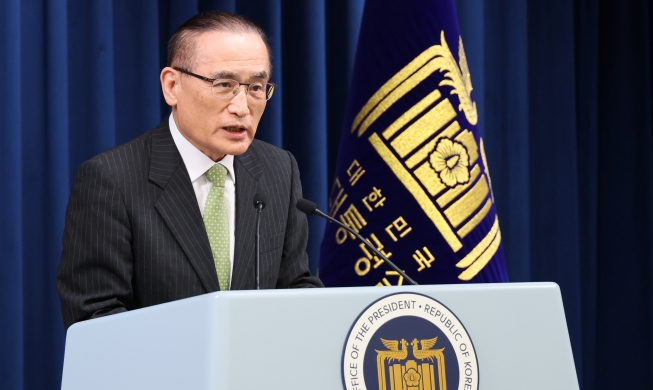
The National Museum of Modern and Contemporary Art is hosting a special exhibit to mark its 30th anniversary of moving to Gwacheon, Gyeonggi-do Province. The photo shows Nam June Paik’s work of video art 'The More, the Better' (1988) and 'Thorny Rope' (2016) by Lee Seungtaek.
The grand video tower “The More, the Better” welcomes visitors to the Gwacheon branch of the National Museum of Modern and Contemporary Art (NMCA). This artwork is made up of 1,003 TVs by Nam June Paik in 1988. The wall surrounding the video tower is tied together with 1,500 meters of paper rope, which is also a work of art titled “Thorny Rope” (2016) by Lee Seungtaek, who reinterpreted Paik’s work. The ropes symbolize the link that connects to utopia. These two works of art seem to meet through the ropes with supernatural energy, or qi, which leads them to travel from the artists to the universe, from this life to the afterlife, and from this world to the other world.
This is the first sight you can see at the National Museum of Modern and Contemporary Art, which is hosting a special exhibit, “As the Moon Waxes and Wanes.” The museum began the exhibit on Aug. 18 to mark the 30th anniversary of moving to Gwacheon in Gyeonggi-do Province.
The large-scale exhibit includes all forms of art, ranging from paintings, sculptures, installation works, media art, performances, photos, handicrafts, design, calligraphy and architecture. The title of the exhibit means that works of art are like all the creatures on the Earth, as once they are created they begin to disappear some day as time passes.
This exhibit is largely divided into three main themes: Interpret, Circulate and Re-light.
The first part is, again, divided into two sections: Expansion and Relation. The first part is designed to look at various ways of communication surrounding each of the two different artworks through collaboration between artists, producers and researchers. In this part, each work of art is coupled with another so that the audience can appreciate both works while comparing the two. These works include “The More, the Better” by Nam June Paik coupled with “Thorny Rope” by Lee Seungtaek, and “Edge South of the Grand Canyon” by David Hockney and “Dream Journey - Childhood” by Hwang Inkie. Visitors can also learn more about the background of the works and the stories behind their production.
Other interesting works in this part are “Monument-Comfort Women” (1997), an installation work by Christian Boltanski, a photography installation artist from France, as a tribute to the soul of the "comfort women" victims who were forced into sexual slavery by Japanese soldiers. There is also “Xanadu” (2016) by Park Kiwon and a spacecraft-shaped floating artwork titled “Willing To Be Vulnerable – Interlude” (2015-2016) by Lee Bul.
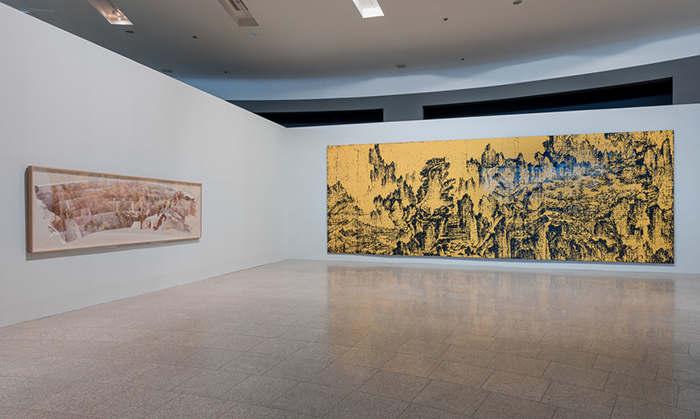
'Edge South of the Grand Canyon' by David Hockney (1982) (left) is on display with 'Dream Journey - Childhood' by Hwang Inkie in the first part of the NMCA’s special exhibit titled ‘As the Moon Waxes and Wanes.’
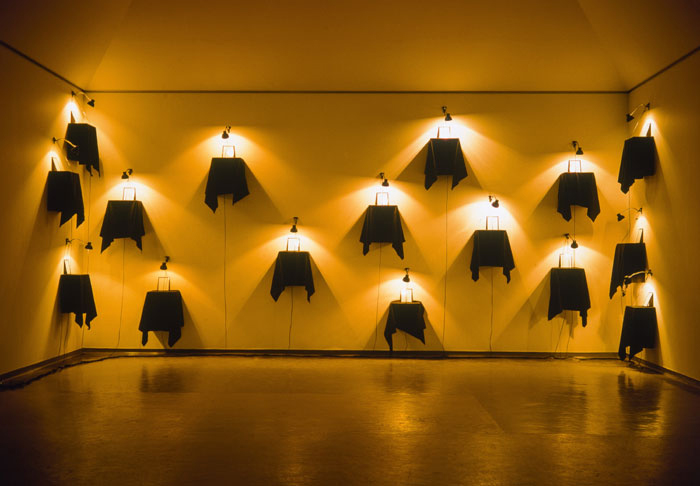
Christian Boltanski uses lanterns, wooden boxes and black cloth to create the above installation work 'Monument-Comfort Women' (1997).
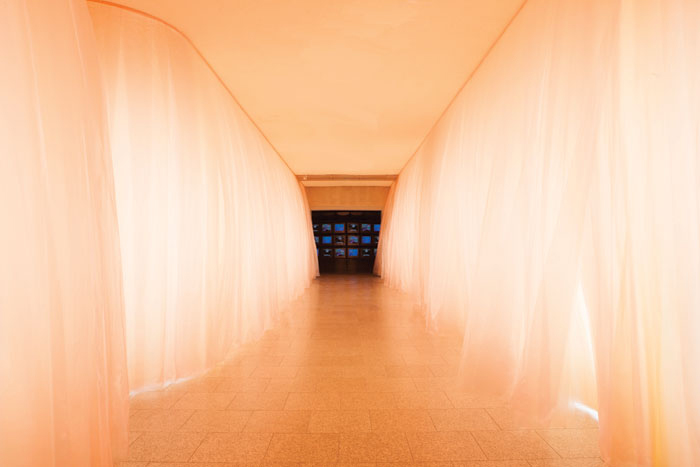
For 'Xanadu' (2016), Park Kiwon uses vinyl to create a dreamlike world.
The second theme, Circulate, is further divided into two sub categories: The Hidden Side and Since Then. Park Sookeun’s oil painting “Grandfather and Grandson" (1960) reminds the audience of vague memories of childhood.
“Toilet Project” (2004-2016) by Shin Meekyoung is another artwork to look at carefully, as it's designed to let people use bust-shaped "bars" of soap to wash their hands in the bathroom. Other interesting works of art include the oil painting “Primordials No.1-62” (1962) by Park Seobo, with a record of everywhere the work has been displayed written on the back of the canvas, and the oil painting “Landscape” by Oh Ji-ho whose work features an X-ray image of a female nude.
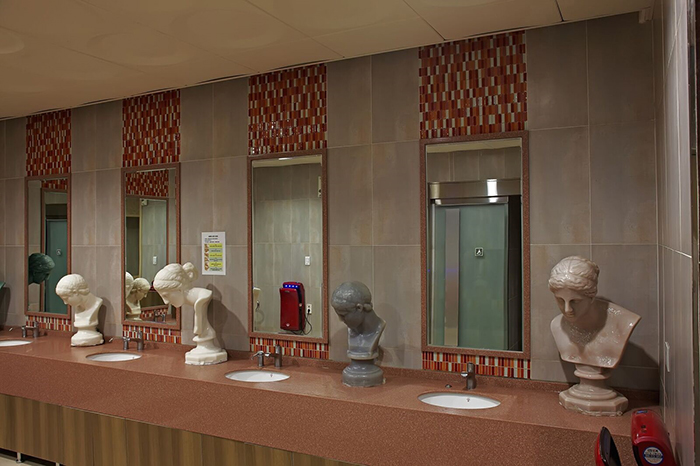
'Toilet Project' (2004-2016) is by Shin Meekyoung. The artist put torso-shaped busts of soap in an actual bathroom so that people could use them to wash their hands.
In the third part, dubbed Re-light, visitors can find works of art owned by the museum but which have not been on display for a long time. These works include “Portrait Museum – From Body to Face” by Koh Nakbeom (1997-1998), and “Jacky’s Swing,” a work of media art that shows an image of a woman talking and playing on a swing, by Kim Youngjin (2006).
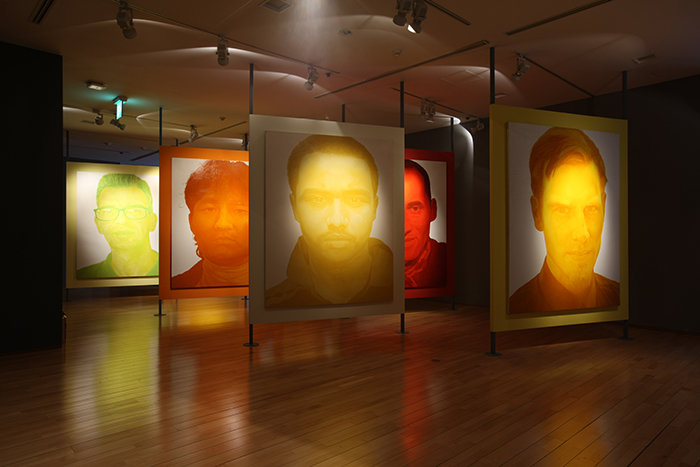
'Portrait Museum - From Body to Face' (1997-1998) is by Koh Nakbeom.
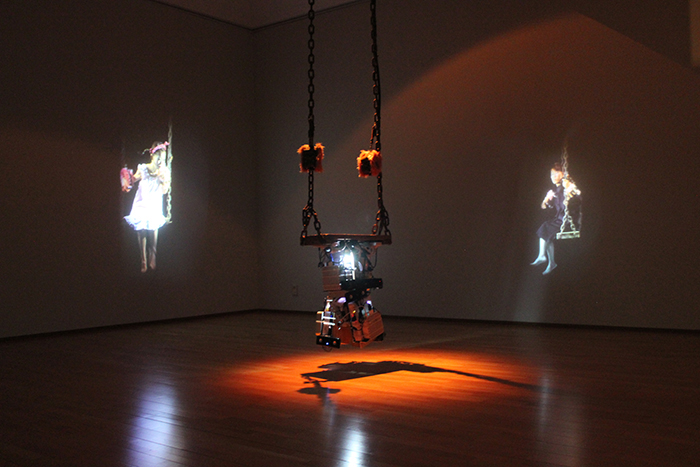
'Jacky’s Swing' is a work of media art that shows an image of a woman talking and playing on a swing, by Kim Youngjin (2006).
The NMCA first opened in 1969 at the old Japanese General Government building on the grounds of Gyeongbokgung Palace. It was later moved to Deoksugung Palace, and then moved to Gwacheon in 1986. As of August 2016, the Gwacheon branch owns 5,834 works of art, more than 70 percent of its total of 7,840 works owned by the museum, and plays a central role in the world of Korean art.
This latest exhibit will run until Feb. 12, 2017.
More information about the museum and its exhibits is available at the museum’s website (http://www.mmca.go.kr) with services in Korean, English, Japanese and simplified Chinese.
By Yoon Sojung
Korea.net Staff Writer
Photos: NMCA
arete@korea.kr
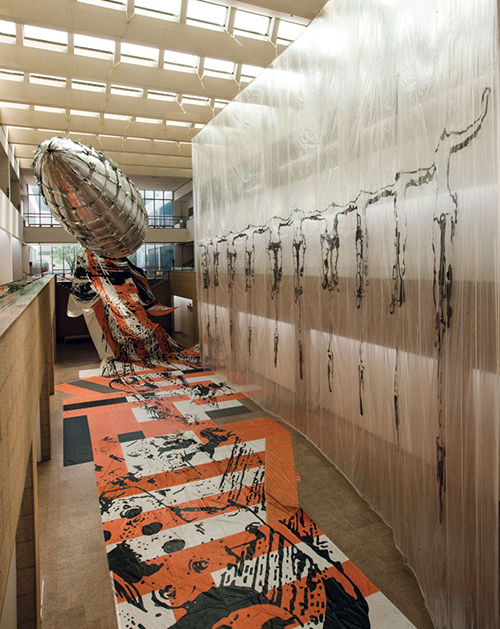
Lee Bul’s work 'Willing To Be Vulnerable – Interlude' (2015-2016) looks more like a spacecraft floating in the sky.
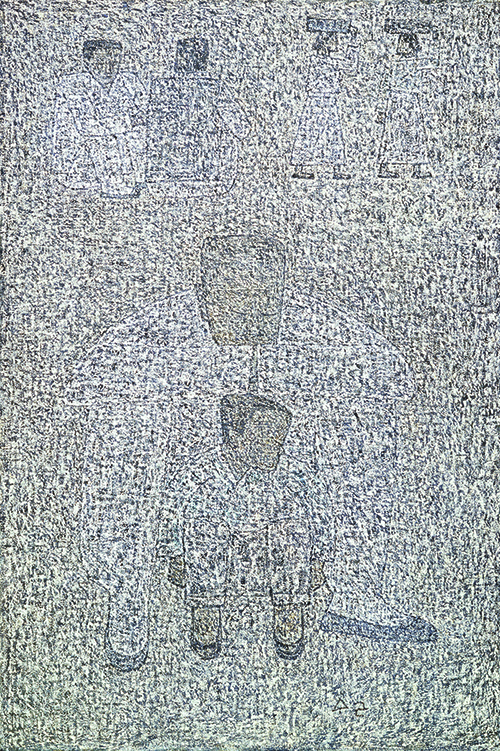
Park Sookeun’s oil painting 'Grandfather and Grandson' (1960) gives viewers a vague memory of childhood.
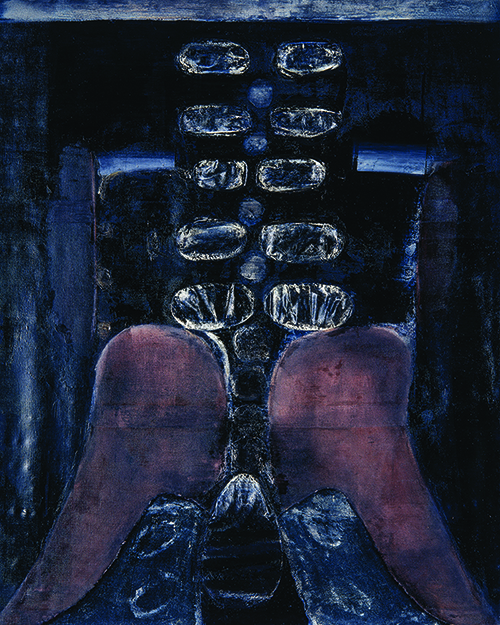
'Primordials No.1-62' (1962) is by Park Seobo.
